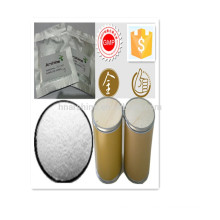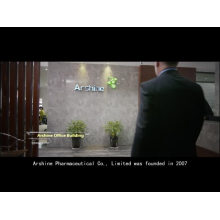Structural differences in amylose and amylopectin
2021-05-09
Starch is a nutrient for plant reserves. It is stored in seeds, tubers and roots of plants. After a plant matures, the starch content of various plants differs depending on the variety, climate, soil quality, and other growing conditions. Even if different plants of the same variety grow in the same fast place, the amount of starch contained is not necessarily the same. Starch contains more starch; if rice contains about 80% of starch, wheat contains about 70%, while potato contains about 20% of starch. Starch is not a simple molecule but a mixture. It consists of two different types of starch, one is amylose and the other is amylopectin. The proportion of amylose in the starch obtained from different crops is not the same. Amylose and amylopectin differ greatly in structure, properties and chemical reactivity. The main differences are as follows:
(1) Molecular weight, crystal structure, and retrogradation Amylose analyzer analysis results showed that the molecular size of amylose and amylopectin are not uniform, and the size of the molecules varies greatly. Amylose has a molecular weight in the range of 3 to 160,000. Pullulan has a larger molecular weight than amylose and has a molecular weight of 10 to 1,000,000. The size of amylose is small, and the degree of association between the molecular chain and the molecular chain is large. The formed crystallite bundle has a compact crystal structure and a large crystal area. The amylopectin is arranged in parallel with the glucose chains at the branching ends, and forms hydrogen bonds with each other to form bundles of microcrystals. Therefore, the amylopectin has a small crystal area, a less dense crystal structure, and large starch particles.
Because amylose has a relatively regular arrangement of molecules, the molecules are easily rearranged with each other. So in the cold aqueous solution, amylose has a strong cohesive precipitation performance. The molecular weight of amylopectin is large, and the steric hindrance of each branch decreases the intermolecular forces. Moreover, due to the effect of branches, the water molecules can easily enter the microcrystalline bundles of amylopectin, which hinders the agglomeration of amylopectin molecules and makes amylopectin difficult to coagulate.
Industrially, amylose is separated from amylopectin using the difference in retrogradation of amylose and amylopectin.
(2) Solubility and Viscosity Amylose dissolves in hot water. In hot water of 50 to 60 "C, amylose dissolves to form a solution with viscosity. However, the solubility of amylose does not change much with increasing temperature. Amylopectin is insoluble in water, but in the 50-60"C hot water, the interaction of each branch in the amylopectin molecule is greater than the effect of water molecules on the molecular chain. So at this temperature, amylopectin is insoluble in water, but it can swell and moist in water. When the temperature rises Nloo. At the time of c, the penetration of water is accelerated, the force between the branches weakens, and the interaction with water molecules increases. Amylopectin begins to dissolve in water and forms a very viscous liquid. When the temperature continues to rise to 120 "C, the solubility of amylopectin increases.
During the dissolution of starch in water, the viscosity is constantly changing. When the starch granules begin to dissolve, the viscosity gradually increases, reaching a maximum, and as the temperature continues to rise, the viscosity decreases. When the temperature decreases, the viscosity begins to increase again. Amylose has a small particle size and a tight crystal structure. The degree of association of hydrogen chains in the molecule is so large that it is not easy for water molecules to drill into the crystallite beam to disperse all hydrogen bonds; that is, many polar genes in amylose molecules still interact with each other without forming a role with water molecules. force. So amylose is soluble in water in warm water, but its viscosity is not as large as amylopectin.
(3) Coloration with iodine Iodized starch solutions are blue or dark blue, which is a sensitive and effective way to test starch. Starch may show blue or dark blue after contact with iodine solution. This chromogenic principle is generally believed to be due to the starch molecules having a helically coiled structure that enables starch and iodine to form a complex of starch-iodine, thus exhibiting color.
The color reaction between starch and iodine is related to the length of the multi-glycosidic bond (ie, the degree of polymerization) in the starch molecule. The relationship between the length and color of starch polyglycosidic bonds is shown in Table 1.2.

The amylose molecule is an unbranched chain structure composed of macroglucose units, and the chain has a helical curl, forming an average of one helix per six glucose units. The number of helical turns of the entire amylose molecule is large. of. When the iodine solution is in contact with the starch, the iodine molecules can enter the helix of the starch molecule. On average, each circle of the helix can bind an iodine molecule. The entire amylose molecule can bind more iodine molecules. Therefore, the color reaction of amylose with iodine appears dark blue. In the amylopectin molecule, the branched chain can also form spiral coils, but since the average length of each branch of amylopectin is short, it generally contains only 20 to 30 glucose units, and the number of corresponding complexed iodine molecules is also small. Therefore, the color reaction of amylopectin with iodine appears purple or red.
When the starch solution is heated, the spiral curl in the starch molecules can be elongated and expanded. The destruction of one iodine molecule per six glucose units. Therefore, the coloration effect with iodine disappeared. When the starch solution cools, the molecular chain can revert to spiral curl and color development still occurs. Starch solution and iodine reacted to show blue solution. When heated, blue disappeared slowly. The color of the pullulan solution disappears faster. This is mainly due to the fact that the amylopectin molecule has a small number of helical turns and is easily stretched due to heat.
(4) Chemical reactivity Amylose molecules are relatively stretched at higher temperatures, and polar genes are exposed. It is easy to interact with some polar organic substances such as alcohols and fatty acids. In the amylopectin molecule, the branching is dendritic and hinders the space, so the reaction with the polar reagent is slow.
In summary, amylose and amylopectin have different structures, properties and chemical reactivity. Industrially, amylose is separated from amylopectin and used in different ways. A three-dimensional network-like macromolecule prepared by cross-linking amylopectin with epichlorohydrin is stable in nature and can effectively react with heavy metal ions such as ca2 + and zn2+ in waste water to facilitate the removal of heavy metal ions in wastewater. recycle and re-use. The film prepared by graft copolymerization of amylopectin instead of polyethylene plastic film will not cause environmental pollution.
Related equipment recommendation: powder screening
If you want to know more about the products in Structural differences in amylose and amylopectin, please click the product details to view parameters, models, pictures, prices and other information about Electrolyte Additive,Iodine Crystal Granule Crystal,Iodine Crystal,Cas 7553-56-2.
Whatever you are a group or individual, we will do our best to provide you with accurate and comprehensive message about Structural differences in amylose and amylopectin!
Electrolyte Additive, Iodine Crystal Granule Crystal, Iodine Crystal, Cas 7553-56-2
Steel Sheet & Plate Co., Ltd. http://www.hnphotoinitiators.com


